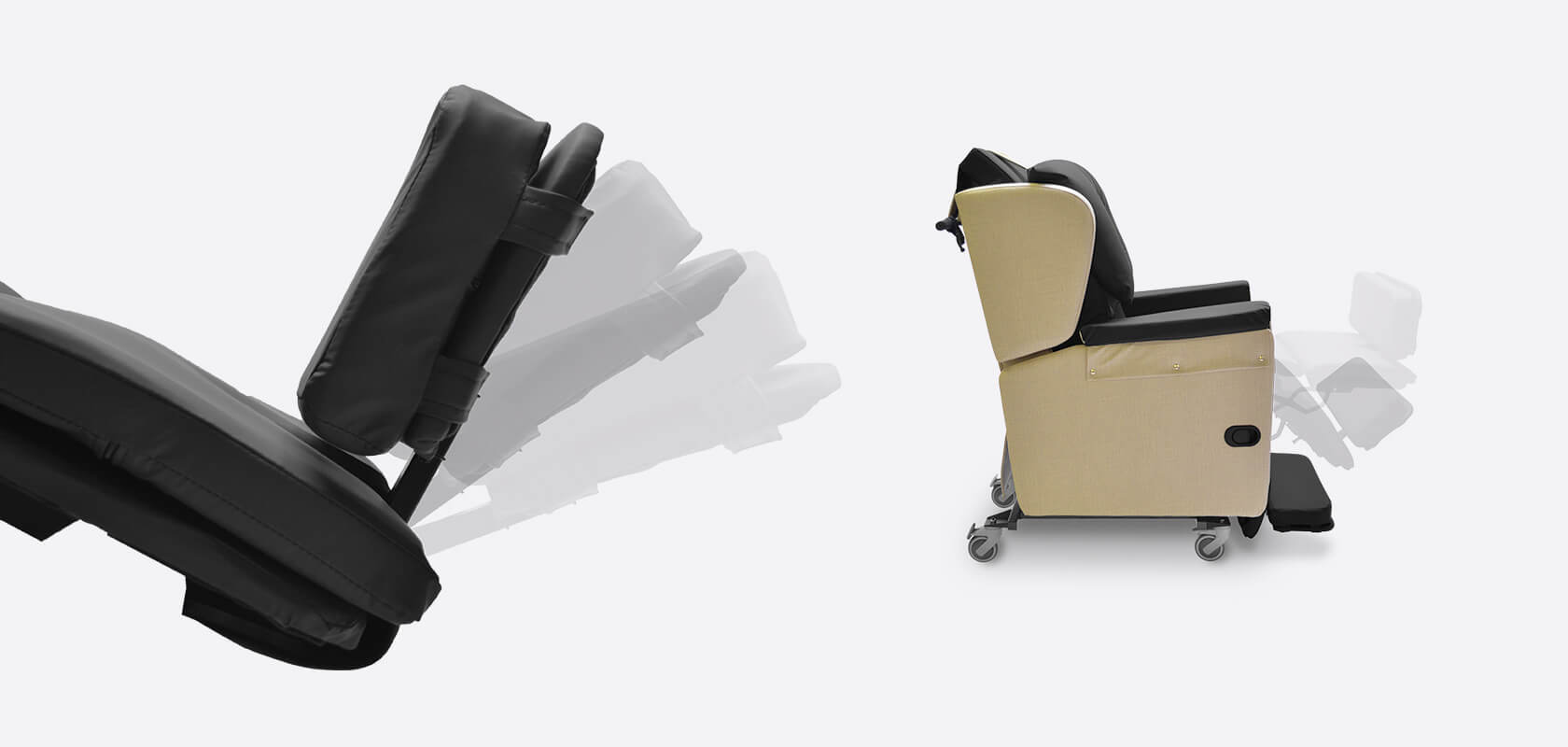Being seated for a large portion of the day can put a huge amount of stress on the lower half of the body, leaving 19% of our total weight on our legs and feet. With all that pressure, it’s important to make sure our sitting position is not only comfortable, but also promotes healthy joints and muscles.
The Hamstrings
Positioned on the back of each thigh and pulling over both the knee and hip joint, our hamstrings are essential for movement. In order to maintain mobility in our bodies while we are seated, both hamstrings must be kept supple and ready to flex, providing us with the best possible range of motion as we get older.
Leg Rests
To ensure hamstrings are taken care of when seated, a negative angle leg rest should be used, with both feet placed flat on a footplate. This means keeping the lower and upper parts of both legs supported, with the angle between the thigh and calf at slightly less than 90 degrees. Hamstring muscles will then be contracted and resting, with weight evenly distributed through the legs and feet.
This position can also be helpful for stand transfers, as an individual can easily get both feet flat on the floor, with their heel positioned behind the knee. This process can be made more efficient with the help of an anterior tilt mechanism, a feature of many powered recliners. An innovative system, it will allow an elderly or less able person to move themselves from sitting into a stable standing position, often without the assistance of a carer.
Points to Remember:
The height of the foot rest should be adjusted so that the upper part of the leg lies flat on the seat, with knees kept below hips. Not doing so will leave hamstrings unsupported, putting additional weight on other areas of the body and increasing the risk of pressure ulcers.
Keeping legs overly contracted for extended periods can cause Posterior Pelvic Tilt and pressure ulcers.
Chamfered cushions, which extend outward beyond the seat edge, are an effective means of lessening the risk of soreness and ulcers behind the knees.
Shorter legs can be supported by using a split cushion placed on the seat.

Elevated leg rest
Having legs straightened and hamstrings elevated for long periods can have a detrimental effect on posture, however, for a short time it can improve flexibility and maintain suppleness in this important muscle group. Some mechanical and motorised chairs allow for the elevation of one leg at a time, supporting the other in a contracted position that can easily be altered for comfort.
Points to Remember:
Leg rests should not be raised to straighten the legs of a person who has tight hamstrings.
Leaving both legs elevated can, over time, put a disproportionate amount of body weight onto the pelvis and spine, a common cause of pressure ulcers.
For advice on the kinds of chairs that could improve your posture and reduce risks to your health, get in contact today. We have a huge range of mechanical and electrically powered recliners available, and our experienced staff will be happy to help find the one that’s right for you.

